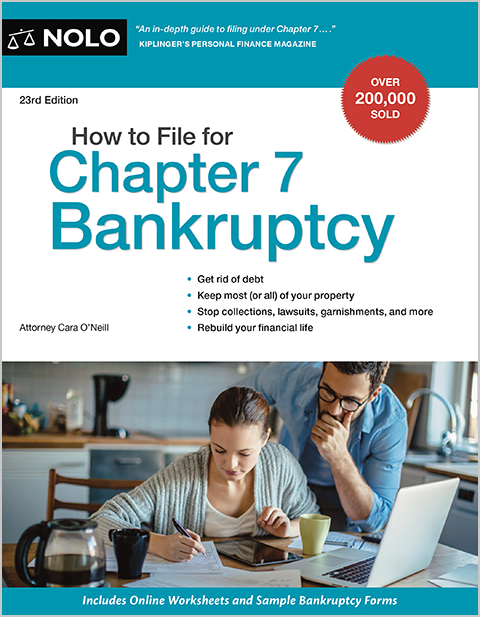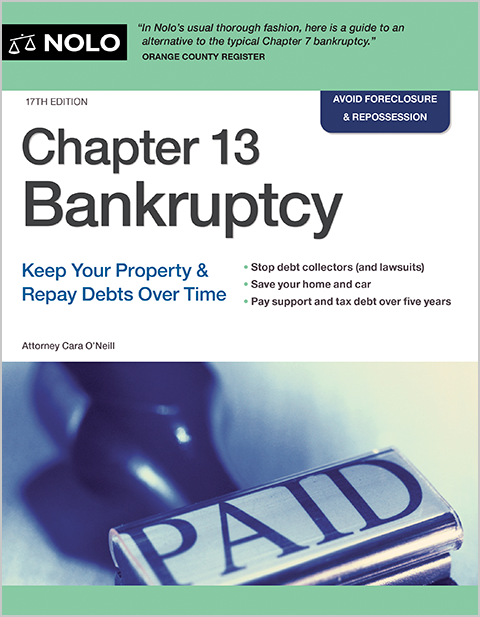Some property transfers will be undone if you later file a bankruptcy case.
Sometimes debtors want to keep more property than allowed when filing for bankruptcy. But the consequences for doing so can be harsh. Here's what you'll want to know about fraudulent transfers in bankruptcy:
- Giving away property or selling it for less than it's worth is a fraudulent transfer.
- The bankruptcy trustee can undo fraudulent transfers.
- Hiding assets you aren't entitled to keep (nonexempt property) is never worth the risk.
Learn about bankruptcy fraud and the consequences and penalties associated with bankruptcy fraud.
Types of Fraudulent Transfers in Bankruptcy
If you're wondering how a trustee could find out about a fraudulent transfer, it's not as hard as you might think. Sometimes someone you know will inform the trustee outright, or you might reveal it yourself. You must disclose all property transfers (for instance, if you sold or gave away a home, car, or boat) that occurred during the two years before your filing on the Your Statement of Financial Affairs for Individuals Filing for Bankruptcy form. The trustee will review the form entries for signs of a fraudulent transfer (also called a fraudulent conveyance). The trustee reviews other schedules, too.
Intentionally Committing Fraud
"Actual fraud" happens when you sell, give away, or otherwise transfer your property to someone else with the specific intent of keeping it out of the hands of your creditors. Doing this shortly before filing for bankruptcy can be considered bankruptcy fraud.
Proving bankruptcy fraud can be difficult, but sometimes it's as plain as day. People try to hide the fact that they don't intend to pay a creditor when transferring property, so the courts look for "badges of fraud"—facts and circumstances which tend to show that the debtor intended to cheat the creditor.
Here are some common badges of fraud:
- selling property for less than the fair market value
- transferring assets to an insider, such as a family member or trusted friend
- transferring ownership to someone else, but keeping the property for your use
- becoming insolvent after the transfer
- failing to disclose a transaction, or
- conducting a transfer in an unusual way.
Example. Your business, a dress shop, isn't making much money, and in fact, it's insolvent—the outstanding loans total more than the value of all the inventory and fixtures. In a last-ditch effort to keep afloat, and without telling the creditors, you sell half of the inventory to another boutique for significantly less than what it's worth. Instead of using that money to pay your lender as required by the financing agreement, you use it to pay the store's rent and your car loan.
Fraudulent conveyances can happen in both business and private dealings. For instance, intentionally selling your car without paying the car lender would likely count as a fraudulent conveyance. Also, you'd likely run into the same problem if you transferred shares of stock to your children before filing for Chapter 7 bankruptcy (in most states, stock isn't exempt property and would be sold for the benefit of creditors).
Selling Property Cheap (Or Giving It Away)
The second type of fraudulent transfer involves transferring property to someone else for less than it's worth. Even though this is also considered a fraudulent transfer, it doesn't necessarily involve an intent to defraud a creditor.
Example: You agree to sell your 15-year-old pickup truck to your cousin. You know its book value is $3,000, but wanting to give the guy a break, you agree to take just $1,000 for it. You file for bankruptcy ten months later.
This type of transfer differs from the first transfer in an important way: There was no intent to defraud creditors out of money they'd be entitled to through the bankruptcy. In fact, such a transfer might occur even before anticipating handling financial problems by filing for bankruptcy. Even so, it's considered a fraudulent transfer if two conditions are met:
- The property transfer was for less than the property's "reasonably equivalent value."
- The person who transferred the property was insolvent at the time or became insolvent after the transfer.
Courts will consider the circumstances surrounding the transfer to determine if you received reasonably equivalent value. Some of the factors include:
- the fair market value of the property
- whether the transfer was in exchange for a promise of future business
- whether the transfer was made in the ordinary course of business, and
- the value of other offers received for the property.
Unwinding a Fraudulent Transfer
In bankruptcy, creditors suffer the consequences of a fraudulent transfer. It's the trustee's duty to find and liquidate (sell) nonexempt property (property that the filer can't protect in bankruptcy) and distribute the funds to creditors to pay claims. Because of this responsibility, the trustee has the power to unwind fraudulent transfers and recover either the property or its value. Sometimes the trustee must file a lawsuit (adversary proceeding) against the recipient in the process.
Example: Bart, who is up in years, decides to transfer some real estate to Andrew while he's still alive rather than will it to Andrew. By doing so, Bart can avoid a probate proceeding after his death and reduce estate taxes to Bart and Andrew. A year after transferring the property, Bart files for Chapter 7 bankruptcy. Because Andrew didn't pay his father for the real estate, the trustee asks that Andrew turn over the property to the bankruptcy estate so that it can be sold and the proceeds distributed among all the valid claims.
Fraudulent Transfer Lookback Period
The trustee will review all transfers made within two years before filing for bankruptcy (the period increases to ten years for property transferred to a self-settled trust). A bankruptcy trustee can go back as long as four years if the state has enacted laws, like the Uniform Fraudulent Transfer Act, which allows for a longer lookback period.
Keep in mind that trustees have seen many schemes so no matter how novel a plan might seem to you, it likely isn't. Learn what happens when the trustee suspects fraud.

